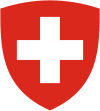Social-Political Group
- Machine translation, like DeepL or Google Translate, is a useful starting point for translations, but translators must revise errors as necessary and confirm that the translation is accurate, rather than simply copy-pasting machine-translated text into the English Wikipedia.
- Consider adding a topic to this template: there are already 1,897 articles in the main category, and specifying
|topic=will aid in categorization. - Do not translate text that appears unreliable or low-quality. If possible, verify the text with references provided in the foreign-language article.
- You must provide copyright attribution in the edit summary accompanying your translation by providing an interlanguage link to the source of your translation. A model attribution edit summary is
Content in this edit is translated from the existing German Wikipedia article at [[:de:Demokratische Partei (Schweiz)]]; see its history for attribution. - You may also add the template
{{Translated|de|Demokratische Partei (Schweiz)}}to the talk page. - For more guidance, see Wikipedia:Translation.
The Social-Political Group (French: Group de politique sociale; German: Sozialpolitische Gruppe) was a political faction in Switzerland.
History
The faction was originally known as the Democratic Group, and consisted of a coalition of parties from different cantons, including the Extreme Left party (Italian: Estrema Sinistra) from Ticino and the Democratic Group from Graubünden.[1]
In the 1919 federal elections the faction won four seats. Although it was reduced to three seats in the 1922 elections, it won five seats in the 1925 elections. However, it was reduced back to three seats after the 1928 elections.[2] In 1931 the faction was renamed the Social-Political Group,[1] and won only two seats in the elections that year.[2] In 1935 it won three seats, and in "silent elections" of 1939, it won five. It retained all five seats in the 1943 and 1947 elections, but was reduced to four seats in the 1951 elections. The faction retained its four-seat strength in elections in 1955, 1959 and 1963, before being reduced to three seats in the 1967 elections.[3]
In 1971, before the elections that year, the faction split into two. The Glarus and Graubunden branches merged with the Party of Farmers, Traders and Independents to form the Swiss People's Party, while the rest of the group merged into the Free Democratic Party.[4][1]
References
- ^ a b c Nohlen, D & Stöver, P (2010) Elections in Europe: A data handbook, p1898 ISBN 9783832956097
- ^ a b Nohlen & Stöver, p1953
- ^ Nohlen & Stöver, p1954
- ^ Geden, Oliver (2006). Diskursstrategien im Rechtspopulismus: Freiheitliche Partei Österreichs und Schweizerische Volkspartei zwischen Opposition und Regierungsbeteiligung. VS Verlag. ISBN 978-3-531-15127-4.
 | This article about a Swiss political party is a stub. You can help Wikipedia by expanding it. |
- v
- t
- e












